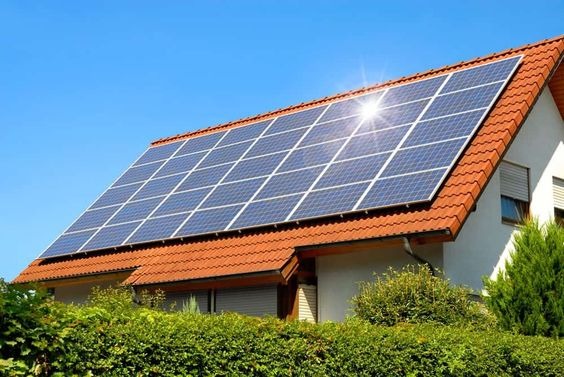Demystifying On-Grid Inverters: Connecting Solar Power to the Grid.
In the realm of solar energy systems, on-grid inverters play a pivotal role in transforming sunlight into usable electricity. These devices are essential components that facilitate the integration of solar power with the electrical grid, enabling homes and businesses to harness renewable energy efficiently. Let's explore what on-grid inverters are, how they work, and their significance in the broader context of sustainable energy solutions.

Understanding On-Grid Inverters: What Are They
An on-grid inverter, also known as a grid-tied inverter or grid-connected inverter, is a device that converts the direct current (DC) electricity generated by solar panels into alternating current (AC) electricity suitable for use in homes or businesses. Unlike off-grid inverters, which are used in standalone systems with batteries, on-grid inverters are designed to synchronize with and feed electricity directly into the utility grid.
How Do On-Grid Inverters WorkThe operation of on-grid inverters is relatively straightforward yet crucial for efficient solar energy utilization:
1. DC to AC ConversionSolar panels generate DC electricity from sunlight. The on-grid inverter takes this DC electricity and converts it into AC electricity, which matches the frequency and voltage of the utility grid.
Before feeding electricity into the grid, the on-grid inverter synchronizes its output with the grid's AC frequency and voltage. This synchronization ensures that the electricity generated by the solar panels can seamlessly integrate with the existing electrical infrastructure.
3. Power InjectionOnce synchronized, the on-grid inverter injects the AC electricity generated by the solar panels into the grid. This electricity can then be used by the consumer connected to the grid, offsetting their energy consumption with clean, renewable solar power.
4. Monitoring and ControlOn-grid inverters often include monitoring capabilities to track the performance of the solar system in real-time. This monitoring helps homeowners and installers optimize energy production and identify any issues promptly.
Benefits of On-Grid Inverter
The adoption of on-grid inverters offers several compelling benefits for both consumers and the environment:
1. Energy Cost SavingsBy generating electricity from solar panels, homeowners and businesses can reduce their reliance on grid-supplied electricity, resulting in lower utility bills over time. In some regions, excess solar electricity generated can even be sold back to the grid, further offsetting costs.
2. Environmental ImpactOn-grid inverters facilitate the use of clean, renewable energy from the sun, reducing greenhouse gas emissions and air pollutants associated with fossil fuel-based electricity generation. This contributes to mitigating climate change and improving air quality.
3. Grid Stability and ResilienceSolar power injected into the grid can enhance grid stability by diversifying energy sources and reducing peak demand during sunny periods. This diversification contributes to a more resilient and reliable electrical infrastructure.
4. Return on InvestmentWhile there is an initial investment in installing solar panels and an on-grid inverter, the long-term savings on energy bills and potential incentives or rebates offered by governments can provide a favorable return on investment (ROI) over the lifespan of the system.
Challenges and Considerations
Despite their benefits, on-grid inverters do have considerations that homeowners and installers should be aware of
1. Grid Connection RequirementsOn-grid inverters must comply with local grid regulations and safety standards. Installers must ensure proper installation and compliance to prevent safety hazards and ensure system reliability.
2. Grid DependencyOn-grid solar systems rely on the availability and stability of the utility grid. During grid outages, standard on-grid inverters automatically shut down for safety reasons to prevent backfeeding electricity into the grid, which could endanger utility workers.
3. System Design and SizingProper system design and sizing are crucial for maximizing the efficiency and performance of on-grid solar systems. Factors such as solar panel orientation, shading, and local climate conditions can impact energy production.
Looking Ahead: The Future of On-Grid Inverters
As solar technology continues to evolve, on-grid inverters are expected to become more advanced, efficient, and integrated with smart grid technologies. Innovations in energy storage solutions, such as batteries paired with on-grid inverters, are also enhancing the ability to store and use solar energy even when the sun isn't shining. In conclusion, on-grid inverters represent a fundamental link between solar energy systems and the electrical grid, enabling seamless integration of clean, renewable energy into our daily lives. By harnessing the power of the sun through on-grid inverters, we not only reduce our carbon footprint but also pave the way towards a more sustainable and energy-independent future. Whether you're considering installing solar panels or simply curious about the impact of renewable energy, understanding the role of on-grid inverters is key to embracing a greener tomorrow.